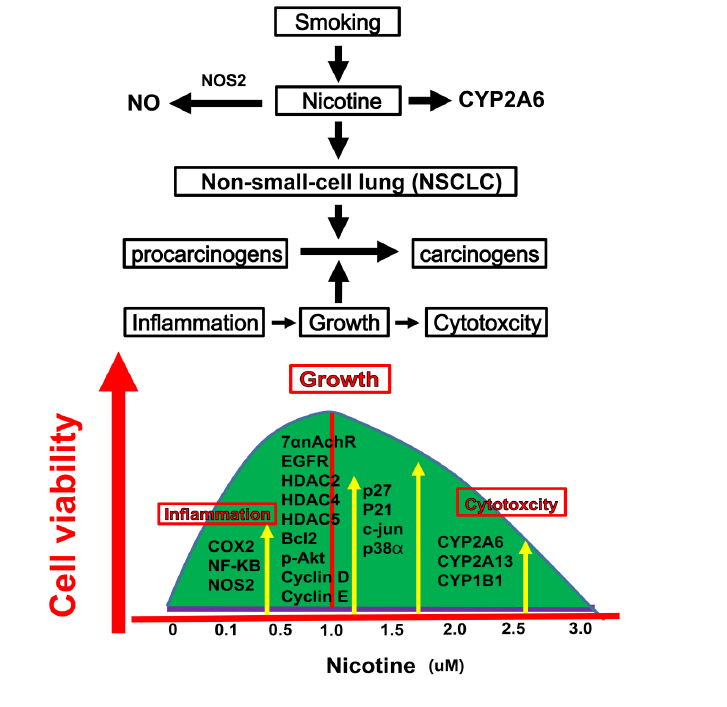Nicotine exposure may affect NSCLC is associated with lung cancer in humans. Whether nicotine exhibits carcinogenesis promoted activities in tumor growth still unknown. Nicotine is known to have dichotomous effects on cancer biology, acting like a pro- or anti-carcinogenesis agent. There are different functions between adenocarcinoma and squamous NSCLC cancer cells. Excess generation of nicotine may inhibit mitochondrial metabolism, protein modification, and DNA cleavage. Materials and Methods: We used the H520 NSCLC line obtained from human lung epithelial cells to detected nicotine growth and toxicity using MTT assay and western blotting. The concentration of nicotine stimulated cell growth to correspond to low concentration, while high concentration was cytotoxic. Results: According to MTT assay results, at 1.0 μM nicotine has significantly enhanced the H520 cell viability (%). Nicotine induced lung cancer carcinogenesis through mechanisms of α7nAchR, EGFR, HDAC2/4/5, Cyclin D/Cyclin E, Bcl-2, p-Akt, and inflammatory proteins of NF-KappaB and COX2 increases at 1.0 μM. Apoptosis proteins were decreases at 1.0 μM nicotine by p21, p27, c-jun, and p38α using western blotting. Nicotine stimulates tumor growth is mediated through α7nicotinic-acetylcholine receptors (α7nAChR), possibly involving inflammation. On the other hand, at high nicotine concentrations (> 1.0 μM) with consistent cytotoxic effects and appeared to be due to direct cell kill. Nicotine can prevent apoptosis induced by NSCLC. Conclusion: Therefore, the effects on chemotherapeutics by NSCLC malignant cell lines, nicotine in concentrations as low as 1.0 μM decreased. These mechanisms are responsible for the genotoxic effects caused by nicotine. This leads to downstream effects on decreased apoptosis, increased cell proliferation and transformation. The malignant NSCLC cells respond to the treatment with nicotine in lung cancer, the nicotine-mediated induction of growth may provide one of its links to α7nAchR or EGFR.

